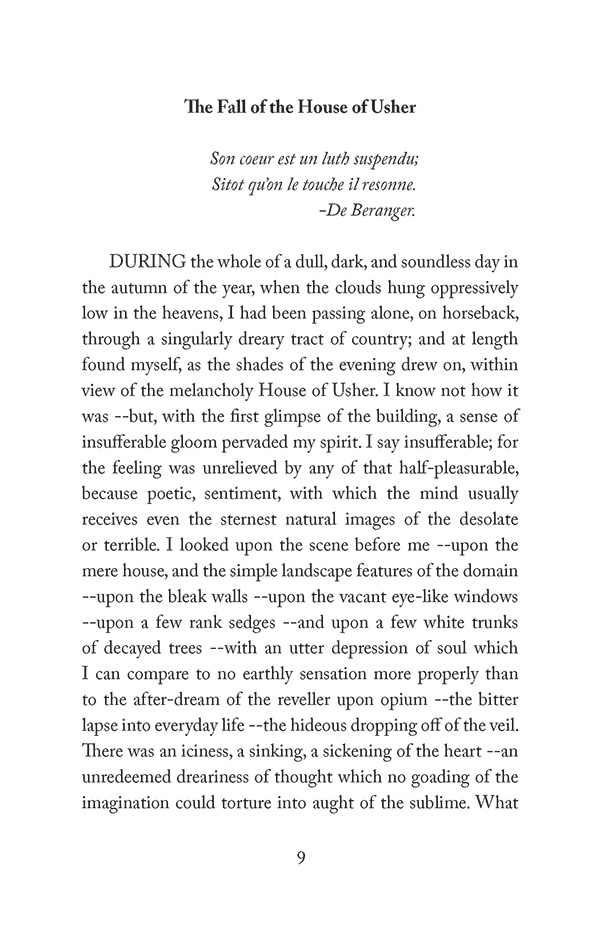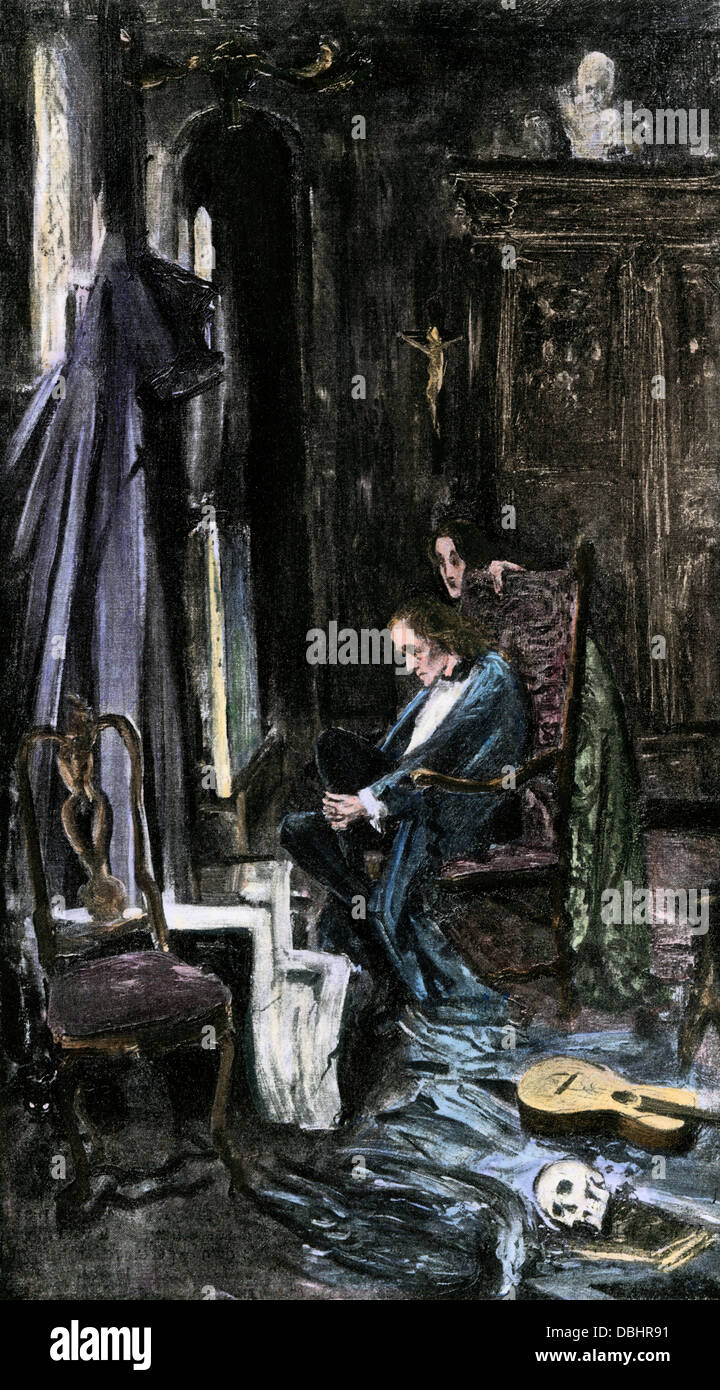Table Of Content

This friend is riding to the house, having been summoned by Roderick Usher, having complained in his letter that he is suffering from some illness and expressing a hope that seeing his old friend will lift his spirits. Like Madeline, Roderick is connected to the mansion, the titular House of Usher. He believes the mansion is sentient and responsible, in part, for his deteriorating mental health and melancholy.
Discover more from Interesting Literature
The narrator helps Roderick put the body in the tomb, and he notes that Madeline has rosy cheeks, as some do after death. The narrator also realizes suddenly that Roderick and Madeline were twins. He leads the narrator to the window, from which they see a bright-looking gas surrounding the house. The narrator tells Roderick that the gas is a natural phenomenon, not altogether uncommon.
Roderick Usher
Its windows are described as “eye-like,” and its interior is compared to a living body. On the other hand, there are plenty of strange things about the Usher family. For one, “the entire family lay in the direct line of descent,” meaning that only one son from each generation survived and reproduced. Poe implies incestuous relations sustained the genetic line and that Roderick and Madeline are the products of extensive intermarriage within the Usher family.
“The Fall of the House of Usher” (
But Virginia did not fall ill until after Poe had written ‘The Fall of the House of Usher’. In the Roger Corman film from 1960, released in the United States as House of Usher, Vincent Price starred as Roderick Usher, Myrna Fahey as Madeline and Mark Damon as Philip Winthrop, Madeline's fiancé. The film was Corman's first in a series of eight films inspired by the works of Edgar Allan Poe. In 2002, Ken Russell produced a horror comedy version titles The Fall of the Louse of Usher. A television adaptation was produced by ATV for the ITV network in 1966 for the horror anthology series Mystery and Imagination. In 1950, a British film version of The Fall of the House of Usher was produced starring Gwen Watford, Kay Tendeter and Irving Steen.
A Summary and Analysis of Edgar Allan Poe’s ‘The Fall of the House of Usher’

The plot of the romance (a fictional title invented by Poe himself, called ‘Mad Trist’) concerns a hero named Ethelred who enters the house of a hermit and slays a dragon. Roderick Usher is a gifted poet and artist, whose talents the narrator praises before sharing a poem Usher wrote, titled ‘The Haunted Palace’. The ballad concerns a royal palace which was once filled with joy and song, until ‘evil things’ attacked the king’s palace and made it a desolate shadow of what it once was. This is an abridged summary and analysis of "The Fall of the House of Usher." For the complete study guide (including quotes, literary devices, analysis of the major characters, and more), click here. Poe was often dismissed by contemporary literary critics because of the unusual content and brevity of his stories.
Poe's Wildest Story Inspired House of Usher's Scariest Moment - www.autostraddle.com
Poe's Wildest Story Inspired House of Usher's Scariest Moment.
Posted: Tue, 07 Nov 2023 08:00:00 GMT [source]
Analysis of Edgar Allan Poe’s The Fall of the House of Usher
Despite this admission, Usher remains in the mansion and composes art containing the Usher mansion or similar haunted mansions. Roderick and Madeline are twins and the two share an incommunicable connection that critics conclude may be either incestuous or metaphysical,[7] as two individuals in an extra-sensory relationship embodying a single entity. To that end, Roderick's deteriorating condition speeds his own torment and eventual death.
Further reading

A second silent film version, also released in 1928, was directed by James Sibley Watson and Melville Webber. La Chute de la maison Usher is a 1928 silent French horror film directed by Jean Epstein starring Marguerite Gance, Jean Debucourt, and Charles Lamy.
The story features numerous allusions to other works of literature, including the poems “The Haunted Palace” and “Mad Trist” by Sir Launcelot Canning. Poe composed them himself and then fictitiously attributed them to other sources. Both poems parallel and thus predict the plot line of “The Fall of the House of Usher.” “Mad Trist,” which is about the forceful entrance of Ethelred into the dwelling of a hermit, mirrors the simultaneous escape of Madeline from her tomb. “Mad Trist” spookily crosses literary borders, as though Roderick’s obsession with these poems ushers their narratives into his own domain and brings them to life. He makes his way through the long passages to the room where Roderick is waiting.
Poe's Short Stories (SparkNotes Literature Guide)
On a stormy autumn (with an implied pun on the word fall?) evening, a traveler—an outsider, like the reader—rides up to the Usher mansion. This traveler, also the first-person narrator and boyhood friend of Roderick Usher, the owner of the house, has arrived in response to a summons from Usher. Very soon we understand that, whatever else it may mean, the house is a metaphor for the Usher family itself and that if the house is seriously flawed, so are its occupants. The tale highlights the Gothic feature of the doppelganger, or character double, and portrays doubling in inanimate structures and literary forms.
Not only does the narrator get trapped inside the mansion, but we learn also that this confinement describes the biological fate of the Usher family. The family has no enduring branches, so all genetic transmission has occurred incestuously within the domain of the house. The peasantry confuses the mansion with the family because the physical structure has effectively dictated the genetic patterns of the family.
Madeline stifles Roderick by preventing him from seeing himself as essentially different from her. The crossing of borders pertains vitally to the Gothic horror of the tale. We know from Poe’s experience in the magazine industry that he was obsessed with codes and word games, and this story amplifies his obsessive interest in naming. “Usher” refers not only to the mansion and the family, but also to the act of crossing a -threshold that brings the narrator into the perverse world of Roderick and Madeline. Roderick’s letter ushers the narrator into a world he does not know, and the presence of this outsider might be the factor that destroys the house. The narrator is the lone exception to the Ushers’ fear of outsiders, a fear that accentuates the claustrophobic nature of the tale.
Roderick tells the narrator that he suffers from nerves and fear and that his senses are heightened. Roderick’s sister, Madeline, has taken ill with a mysterious sickness—perhaps catalepsy, the loss of control of one’s limbs—that the doctors cannot reverse. He listens to Roderick play the guitar and make up words for his songs, and he reads him stories, but he cannot lift Roderick’s spirit.
The narrator is impressed with Roderick's paintings and attempts to cheer him by reading with him and listening to his improvised musical compositions on the guitar. Roderick sings "The Haunted Palace", then tells the narrator that he believes the house he lives in to be alive, and that this sentience arises from the arrangement of the masonry and vegetation surrounding it. Further, Roderick believes that his fate is connected to the family mansion.
Soon, Roderick posits his theory that the house itself is unhealthy, just as the narrator supposes at the beginning of the story. In “The Fall of the House of Usher,” the setting, diction, and imagery combine to create an overall atmosphere of gloom. The story opens on a “dull, dark, and soundless day” in a “singularly dreary tract of country.” As the narrator notes, it is autumn, the time of year when life begins to give way to old age and death. Poe draws heavily on Gothic conventions, using omens and portents, heavy storms, hidden passageways, and shadows to set the reader on edge. Might we then interpret Roderick as a symbol of the conscious mind – struggling to conceal some dark ‘secret’ and make himself presentable to his friend, the narrator – and Madeline as a symbol of the unconscious?

No comments:
Post a Comment